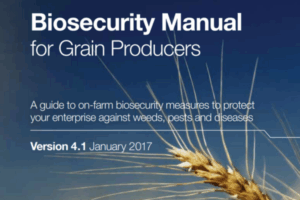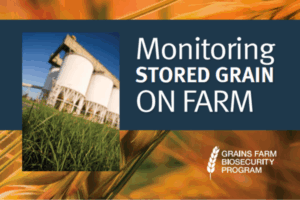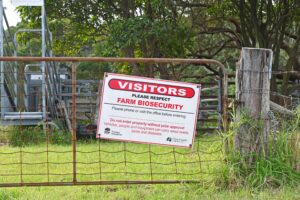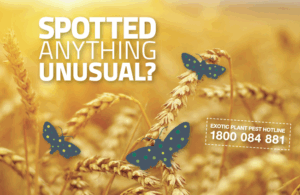
By Jim Moran, Grains Biosecurity Officer, Victoria
Biosecurity is critical for the grains industry. With recent detections of exotic pests like Brown marmorated stink bug, and Russian wheat aphid and the ever present threat of other exotic plant pests spread by international and domestic pathways, protecting your farm has never been more important.
Pest incursions can devastate individual farms causing crop destruction, quarantine zones, and restricted activities. They can also limit market access, impacting growers and their local communities.
But there is good news – simple yet effective biosecurity planning and practices can reduce the risk of pests, weeds, and diseases entering your property and increase the chances of early detection, eradication, and recovery.
Benchmark your biosecurity

Complete the self-assessment questionnaire in the Biosecurity Manual for Grain Producers. This tool enables you to systematically review and identify gaps in your biosecurity practices and implement best practices to strengthen your biosecurity.
This forms the basis of a customised farm biosecurity action plan – an essential investment in your farm’s resilience, productivity and reputation with benefits extending beyond your individual farm to benefit the broader Australian agricultural sector.
Monitor crops for pests and diseases

Monitoring the health of your crops is a fundamental part of crop production and gives you the best chance of spotting a new pest or disease. A pest surveillance record enables you to track the absence or presence of pests.
You, your workers or an agronomist should regularly check your paddocks and grain storages. Use pest-specific traps and follow the advice in the crop monitoring fact sheet and the stored grain monitoring booklet.
Manage and record visitors

Visitors, their vehicles, and machinery can inadvertently carry pests, weeds, and diseases as they move about. The use of farm biosecurity gate signs, directing visitors to notify you of their presence is a simple measure to improve your farm biosecurity. Request your free farm biosecurity gate sign here.
Implementing a visitor register and using a visitor risk assessment checklist are useful tools in helping you to record and assess individual visitor risk with examples of risk mitigation strategies and controls.
Report anything unusual

If you notice anything unusual or see something that could be a suspected exotic pest, call the Exotic Plant Pest Hotline on 1800 084 881. Early reporting increases the chance of effective control , minimising the spread and long-term impact on your farm.
If you find an unusual pest:
Upskill and undertake biosecurity training
The National Biosecurity Training Hub provides a centralised online directory of biosecurity training courses for industry, government and community connecting biosecurity training providers across Australia.
With over 69 courses, the courses listed on the National Biosecurity Training Hub cover a wide range of topics, delivered online as well as in a variety of locations across Australia.
The Plant Health Australia (PHA) Biosecurity Online Training (BOLT) platform also offers free plant biosecurity related eLearning courses. Access is free and available to anyone with an interest in biosecurity.
Biosecurity doesn’t have to be complicated, expensive, or time-consuming. With these essential tools, you can protect your farm from exotic pests. Start building your biosecurity superpowers today. There is a (biosecurity) superhero in all of us. And you don’t even need a cape.
Launched in 2007, the Grains Farm Biosecurity Program (GFBP) is managed by Plant Health Australia (PHA) and funded by growers through Grain Producers Australia (GPA). The GFBP is an initiative to improve the management of, and preparedness for, biosecurity risks in the grains industry at the farm and industry levels.
For more information and helpful grain resources, visit the GFBP website and the Stored Grain Information Hub.